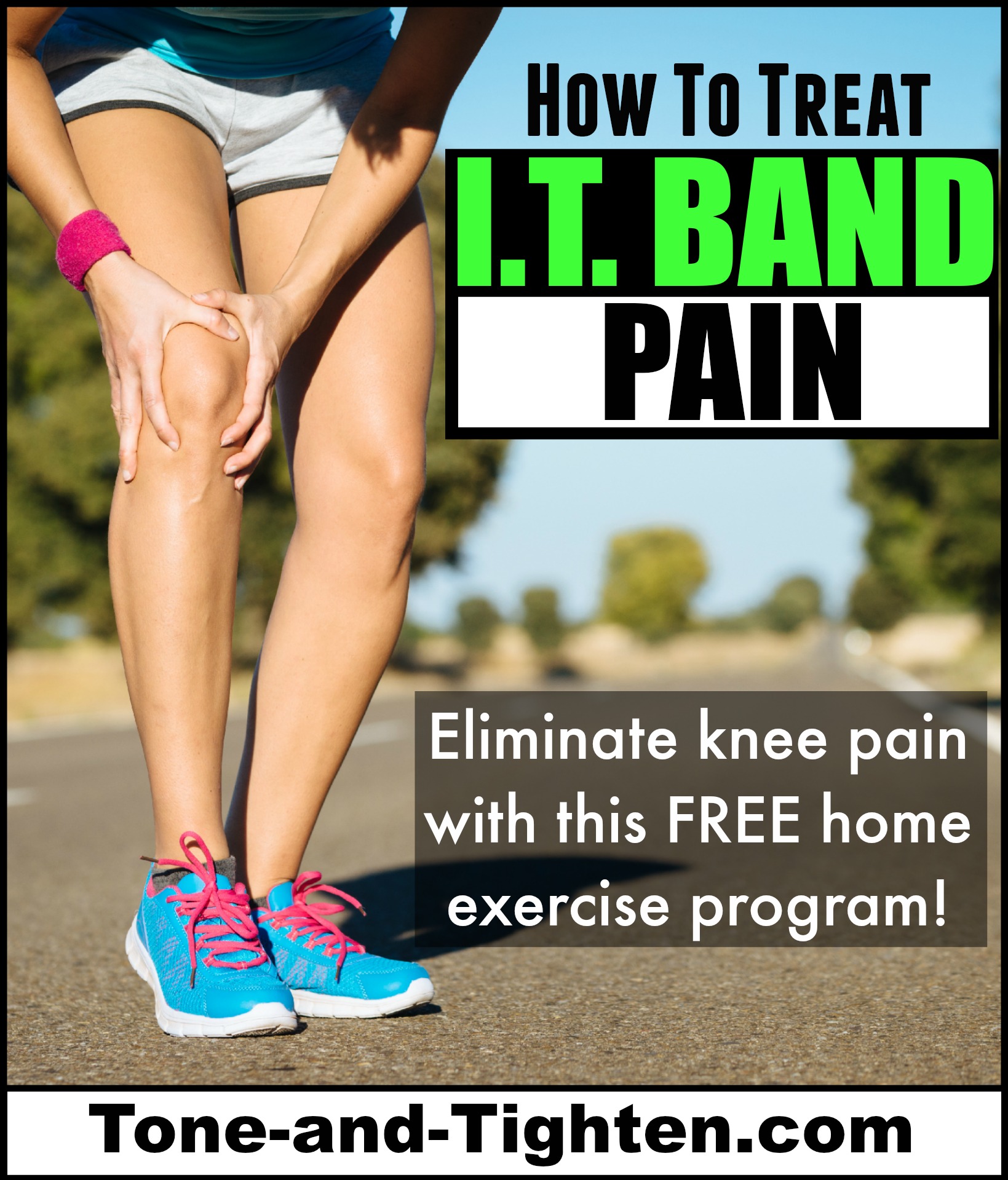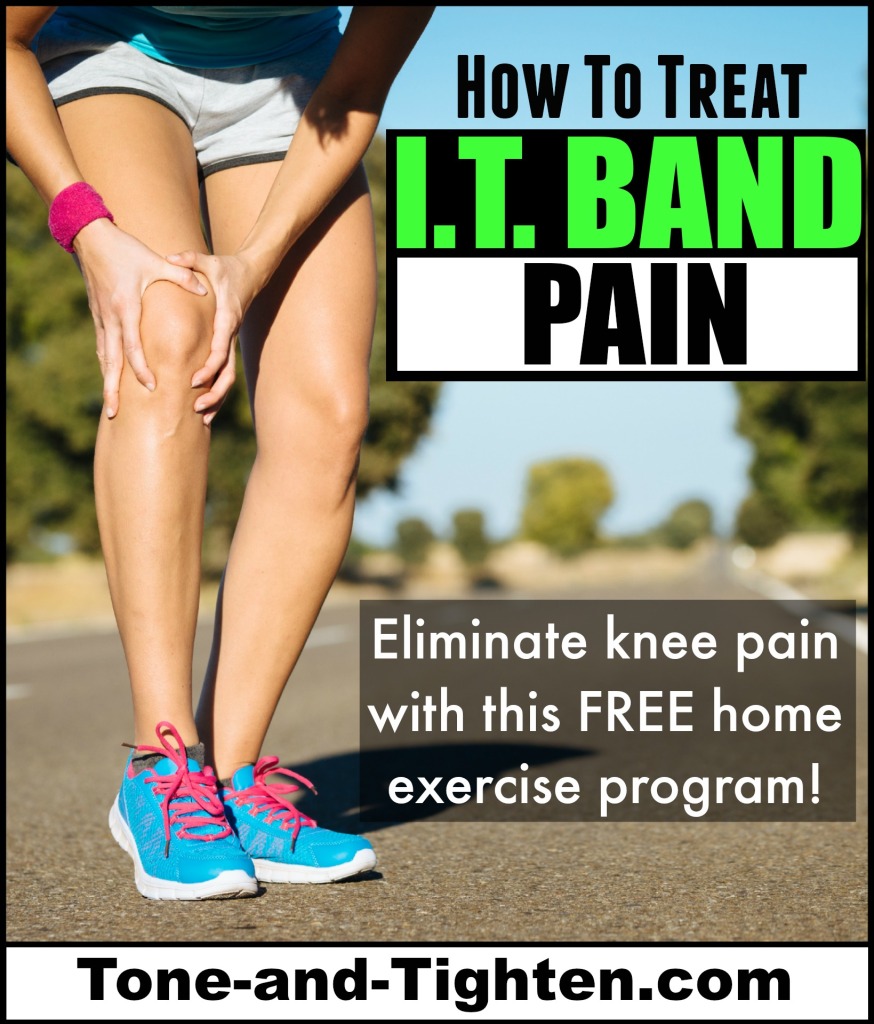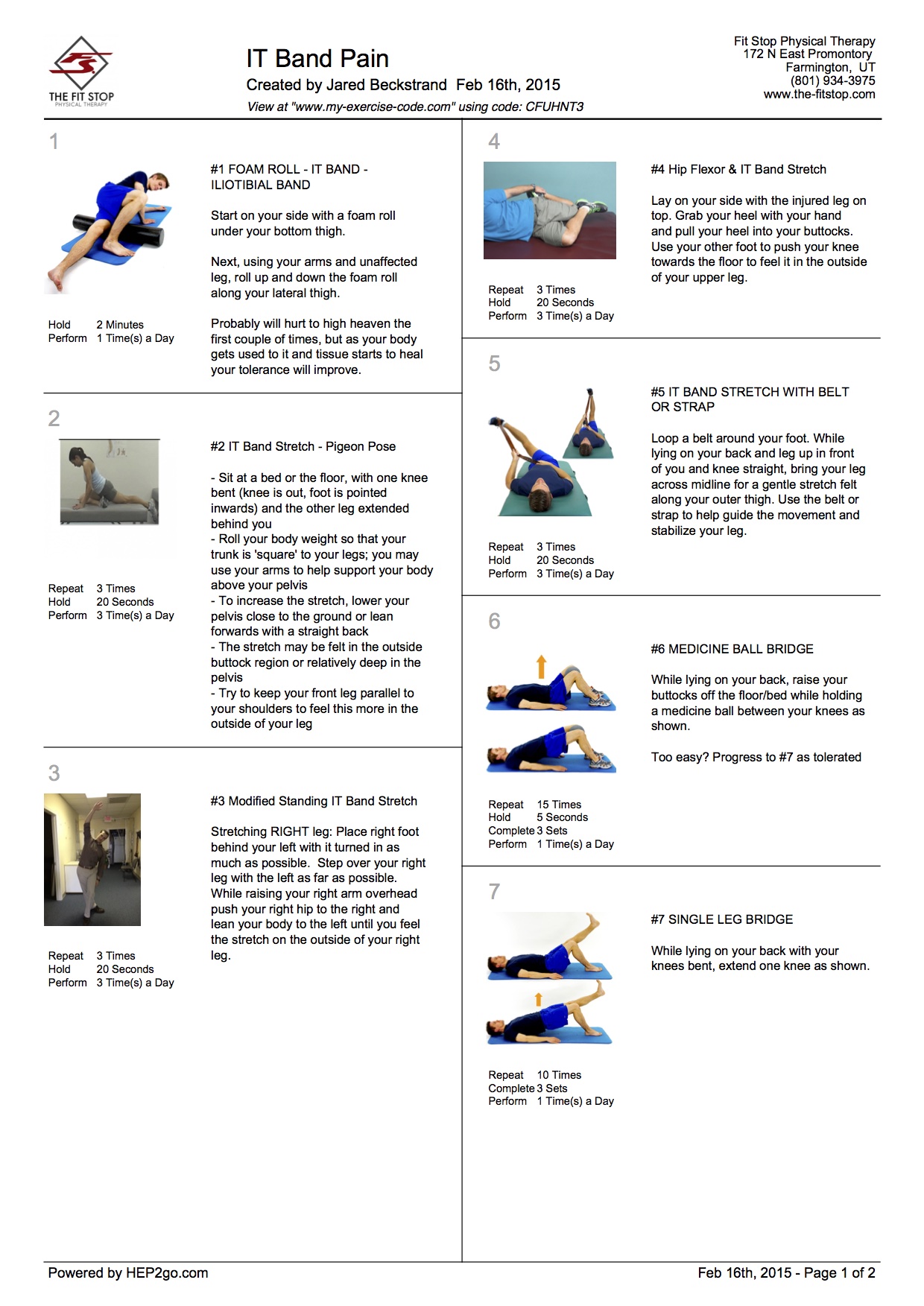Workouts, recipes, motivation, tips, and advice all right to your inbox! Subscribe to Tone-and-Tighten.com using the black bar up at the top of the page.
What to do about it: The thing of concern about this kind of IT band pain (or really any type of tendon problem in general) is the chronicity – how long has it been a problem for you. I would treat IT band pain that has been a problem for two weeks differently then I would treat IT band pain that has been a problem for two months. Let’s explore this in a little more detail…
Acute (less than two weeks): I most commonly see acute IT band pain when someone is trying a new exercise progression for the first time. Maybe you recently increased miles on a run. Maybe you tried to push yourself a little bit harder in the gym. Either way, you progressed from what you’re used to (maybe it was nothing at all to something!) and now your knees are painful because of it. This type of acute pain is largely due to inflammation and therefore responds very well to anti-inflammatory measures. The principles of RICE apply – rest, ice, compression, and elevation. (To read more about acute injury management click here). Resting (taking a break from activities that cause pain), icing (20 minutes on 20 minutes off 3–4 times daily), compression (there are different types of neoprene sleeves and straps that can reduce IT band friction at your knee joint), and elevation (keep your knee propped up while resting and icing; more important if there is swelling present), are your first line of defense in the management of pain from acute injuries. Combine this principle of RICE with the stretches and exercises found below and you’re well on your way to a full return to healthy knees.
But what happens if it’s been going on longer than two weeks? I thought you’d never ask! The majority of patients that I see with this pain in my physical therapy clinic have been experiencing this pain a lot longer than two weeks. Here’s the lowdown:
If you’ve been experiencing me pain for longer than two weeks, chances are we are no longer dealing with a simple case of inflammation. A typical inflammatory response lasts approximately two weeks – after that we need to be a little bit more aggressive to actually stimulate a healing response in the tendon. Deep massage (from another person or using a foam roller – see exercise number one below) is usually my first line of defense. Follow that up immediately with the rest of the stretches and hip strengthening exercises found below. The important difference is that you’re going to want to aggressively try to loosen up your entire IT band and outside of your leg and then combine that with aggressive stretching to your lateral hips, butt, and hamstring muscle groups. Throw in a few strengthening activities and you’re well on your way to healthy knees!
And now – here it is! Here is your free home exercise program to improve motion, decrease pain, and help you “feel better now”. I recommend performing the foam roller exercise as indicated followed by at least 2 of the 4 stretches I have indicated (numbers 2-5) and finishing it up with the strengthening exercises (#6-9). As always I use the site, www.HEP2go.com, to generate these exercise programs for my patients and for you!
Right click on the images below and select “Save As” to save them to your computer and print them off.




